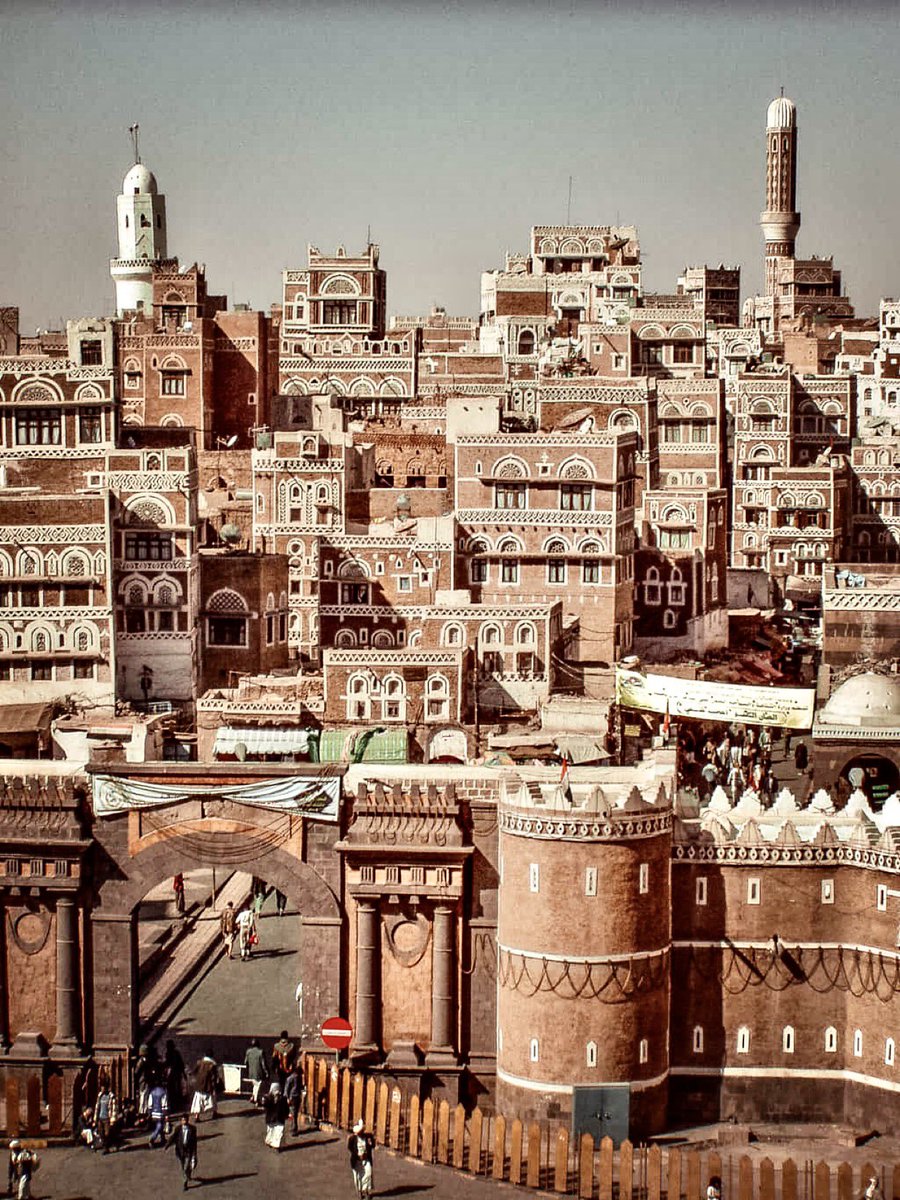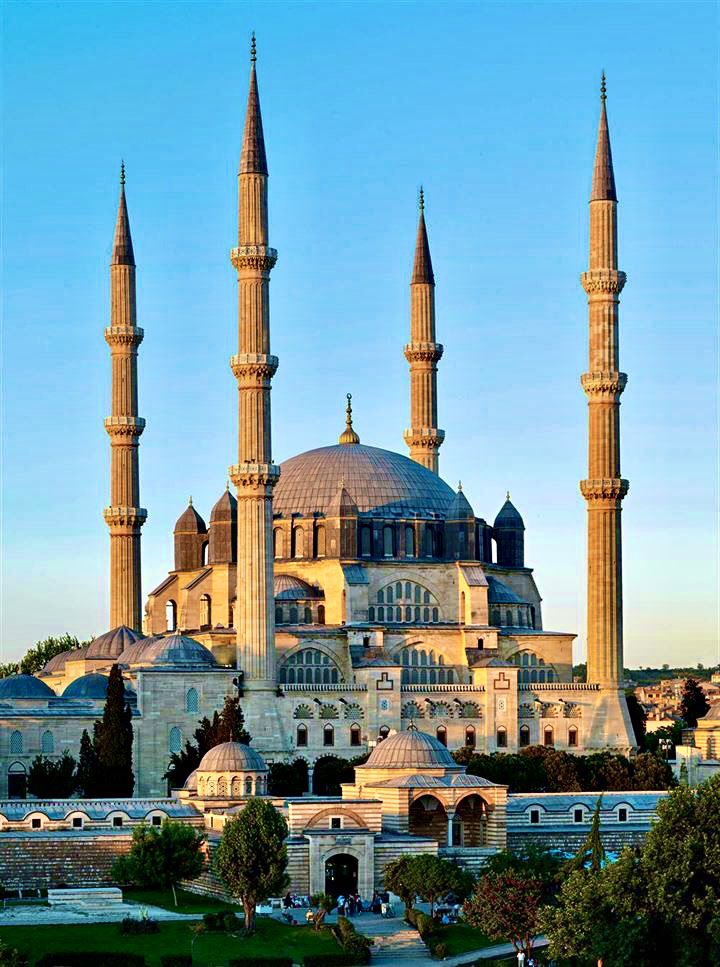
Gems have a special place in Islam. Some precious stones such as rubies, pearls & coral are mentioned in the Quran. Tradition has it that prominent figures in Islamic history wore different stones to help them
Here are 20 examples of precious gems & stones as amulets
A thread…
Here are 20 examples of precious gems & stones as amulets
A thread…

1/ Agate Amulet
mid-18th century
In Iran agate is regarded as a stone with healing properties. This oval-shaped pendant features a selection from the Asma’ al-Husna (the 99 beautiful names of God) at the center, surrounded by the sura Ya Sin (sura 36) from the Qur’an
@metmuseum
mid-18th century
In Iran agate is regarded as a stone with healing properties. This oval-shaped pendant features a selection from the Asma’ al-Husna (the 99 beautiful names of God) at the center, surrounded by the sura Ya Sin (sura 36) from the Qur’an
@metmuseum

2/ Oval bezel amulet from a bracelet,
Mughal Period (17th-18th century)
Inscribed with the Throne verse (Ayat Al Kursi) for protection.
Carnelian stone which is believed to be good luck, incised; jade setting, inlaid with gold & inset with emeralds & rubies
@AshmoleanMuseum
Mughal Period (17th-18th century)
Inscribed with the Throne verse (Ayat Al Kursi) for protection.
Carnelian stone which is believed to be good luck, incised; jade setting, inlaid with gold & inset with emeralds & rubies
@AshmoleanMuseum

3/ Amulet Pendant, Agra, India
1610-20
This amulet was the central pendant of a necklace. It has very intricate details & the eyes of the birds are tiny emeralds inlaid in gold. The back is inscribed with a verse from the Koran. Perhaps made for Emperor Jahangir
@V_and_A
1610-20
This amulet was the central pendant of a necklace. It has very intricate details & the eyes of the birds are tiny emeralds inlaid in gold. The back is inscribed with a verse from the Koran. Perhaps made for Emperor Jahangir
@V_and_A

4/ White chalcedony amulet, Iran
1748
Heart-shaped, flat top and base with straight sides. Cursive Arabic inscriptions - read the translation here britishmuseum.org/collection/obj…
Chalcedony has the power to soothe self-doubt and bring inner peace to the wearer.
@britishmuseum
1748
Heart-shaped, flat top and base with straight sides. Cursive Arabic inscriptions - read the translation here britishmuseum.org/collection/obj…
Chalcedony has the power to soothe self-doubt and bring inner peace to the wearer.
@britishmuseum

5/ Cut, engraved spinel, India
1600
A red precious stone that is softer than a ruby. It was mined in northern Afghanistan. The engraved inscriptions on this show that it belonged to the Mughal emperors Jahangir & Shah Jahan. Spinel is believed to aid healing
David Collection
1600
A red precious stone that is softer than a ruby. It was mined in northern Afghanistan. The engraved inscriptions on this show that it belonged to the Mughal emperors Jahangir & Shah Jahan. Spinel is believed to aid healing
David Collection

6/ Turban Ornament, Balkans or Turkey
19th century
This turban is inlaid with turquoise stones. Turquoise is believed by many to have healing properties, repelling negative energy & the evil eye. This is an object of beauty as well as perhaps being worn for positivity
@metmuseum
19th century
This turban is inlaid with turquoise stones. Turquoise is believed by many to have healing properties, repelling negative energy & the evil eye. This is an object of beauty as well as perhaps being worn for positivity
@metmuseum

7/ Amulet, Delhi, India
Fashioned in white nephrite jade & inset with gold and gems. The nephrite came from Xinjiang & has been used for artefacts made for the Mughal court from the early 17th century. Some believe nephrite jade brings its wearer abundance & good luck
@V_and_A
Fashioned in white nephrite jade & inset with gold and gems. The nephrite came from Xinjiang & has been used for artefacts made for the Mughal court from the early 17th century. Some believe nephrite jade brings its wearer abundance & good luck
@V_and_A

8/ Amulet, Iran
Safavid dynasty, 17th c
Engraved chalcedony. Some believe chalcedony is a nurturing stone that promotes and aids unity and good will. It absorbs negative energy.
@britishmuseum
Safavid dynasty, 17th c
Engraved chalcedony. Some believe chalcedony is a nurturing stone that promotes and aids unity and good will. It absorbs negative energy.
@britishmuseum

9/ The Mogul Mughal, India
1695-1696
One of the world’s largest emeralds, rectangular-cut, weighing 217.80 carats. Carved with a Shi`ite invocation. The color green is believed to be the holy color of Islam and Islamic tradition includes several references to emeralds
@MIAQatar
1695-1696
One of the world’s largest emeralds, rectangular-cut, weighing 217.80 carats. Carved with a Shi`ite invocation. The color green is believed to be the holy color of Islam and Islamic tradition includes several references to emeralds
@MIAQatar

10/ Amulet pendant, India
1631-32
White jade pendant with calligraphic inscriptions in nastaliq script, detailing the title of Shah Jahan. Inscriptions are Qur’an II, 255 & Qur’an XXIII, 97-98; XII, parts of 64. White jade is believed by some to have healing properties
@MIAQatar
1631-32
White jade pendant with calligraphic inscriptions in nastaliq script, detailing the title of Shah Jahan. Inscriptions are Qur’an II, 255 & Qur’an XXIII, 97-98; XII, parts of 64. White jade is believed by some to have healing properties
@MIAQatar

11/ Imperial Turquoise Talisman, Iran
1915
Emperor Franz Joseph I was given this talisman by Mehdi Gassem, a Persian turquoise cutter living in Vienna, inscribed with an Islamic prayer in Persian. It was a tradition to engrave Turquoise gemstones.
Natural History Museum Vienna
1915
Emperor Franz Joseph I was given this talisman by Mehdi Gassem, a Persian turquoise cutter living in Vienna, inscribed with an Islamic prayer in Persian. It was a tradition to engrave Turquoise gemstones.
Natural History Museum Vienna

12/ Carnelian Ring, Iran
9th–11th c
According to al-Biruni, an 11th-century polymath who wrote an important treatise on gemstones, carnelian provided courage in battle & cease hemorrhaging on the body. Excavated at Nishapur, this ring would have served as a talisman
@metmuseum
9th–11th c
According to al-Biruni, an 11th-century polymath who wrote an important treatise on gemstones, carnelian provided courage in battle & cease hemorrhaging on the body. Excavated at Nishapur, this ring would have served as a talisman
@metmuseum

13/ Amulet holding a miniature Quran, India
1700 - 1800
A rectangular box of turquoise enamelled gold inlaid with diamonds & rubies, and enamelled green on the back. Holds a leather bound miniature Quran manuscript. Said to belong to wife of the last of the Mughal Emperors
@RCT
1700 - 1800
A rectangular box of turquoise enamelled gold inlaid with diamonds & rubies, and enamelled green on the back. Holds a leather bound miniature Quran manuscript. Said to belong to wife of the last of the Mughal Emperors
@RCT

14/ Amulet, Iran
20th century
Made of Persian green jade (yashm-e sabz), probably by an artisan of the Bakhtiari tribes in the 1930s. The amulet might have been used as a protection necklace (gardanband) or breast pendant (sineh aviz) to protect babies.
@maasmuseum
20th century
Made of Persian green jade (yashm-e sabz), probably by an artisan of the Bakhtiari tribes in the 1930s. The amulet might have been used as a protection necklace (gardanband) or breast pendant (sineh aviz) to protect babies.
@maasmuseum

15/ Oval bezel carnelian amulet from a bracelet with naskhi inscription, India
18th - 19th century
Carnelian stones attract good luck, abundance, and prosperity. This amulet bracelet would have been worn to bring good luck.
@AshmoleanMuseum
18th - 19th century
Carnelian stones attract good luck, abundance, and prosperity. This amulet bracelet would have been worn to bring good luck.
@AshmoleanMuseum

16/ Rectangular bezel amulet, Iran / India
18th - 19th century (1701 - 1900)
Inscribed with the Throne verse (Ayat Al Kursi) from the holy Qur’an for protection. Uncrystallized quartzite. Some people believe quartzite stabilises positive energy.
@AshmoleanMuseum
18th - 19th century (1701 - 1900)
Inscribed with the Throne verse (Ayat Al Kursi) from the holy Qur’an for protection. Uncrystallized quartzite. Some people believe quartzite stabilises positive energy.
@AshmoleanMuseum

17/ Emerald & Pearl Necklace, India
16th-19th century
The word pearl is mentioned 6 times in the Qur’an in relation to heaven. Pearls represent wisdom of experience.
From the Al Thani collection.
@V_and_A
16th-19th century
The word pearl is mentioned 6 times in the Qur’an in relation to heaven. Pearls represent wisdom of experience.
From the Al Thani collection.
@V_and_A

18/ Amulet, India
Mughal, late 18th or early 19th century
According to William Tayler, who bought it in India, it was deemed to protect the wearer from harm or misfortune - in this case "against palpitation of the heart". White nephrite jade then inset with gold & gem
@V_and_A
Mughal, late 18th or early 19th century
According to William Tayler, who bought it in India, it was deemed to protect the wearer from harm or misfortune - in this case "against palpitation of the heart". White nephrite jade then inset with gold & gem
@V_and_A

19/ Oval amulet with Sura, Turkey
Ottoman
17th–18th c.
Carnelian amulet made of white and red garnet, bordered with a line from the Throne verse (Ayat Al Kursi) from the Qur’an for protection. Carnelian is believed by some to provided courage
Kunsthistorisches Museum, Austria
Ottoman
17th–18th c.
Carnelian amulet made of white and red garnet, bordered with a line from the Throne verse (Ayat Al Kursi) from the Qur’an for protection. Carnelian is believed by some to provided courage
Kunsthistorisches Museum, Austria

20/ Mogul Emerald Necklace / Amulet
16-19th c.
Carved gemstones like this were worn on the arm as amulets.
This emerald is surrounded by diamonds & is suspended from a diamond necklace A hallmark indicates that it was set into the pendant & necklace in France in 20th c.
@NMNH
16-19th c.
Carved gemstones like this were worn on the arm as amulets.
This emerald is surrounded by diamonds & is suspended from a diamond necklace A hallmark indicates that it was set into the pendant & necklace in France in 20th c.
@NMNH

• • •
Missing some Tweet in this thread? You can try to
force a refresh





















